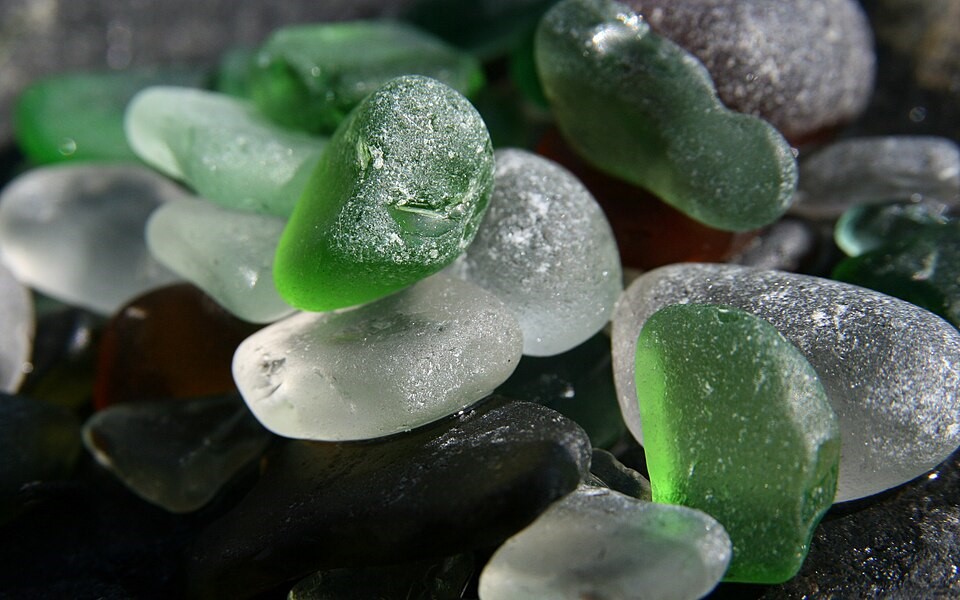
What is the glass beach in Vladivostok? It is a beach near the town of Vladivostok in Russia, which is covered in millions of rounded glass and ceramic pieces.
The beach is called Steklyashka beach, and it is located 15 km northeast of Vladivostok, which is on the east coast of Russia. It is on the edge of Ussuri Bay. The beach has become a popular tourist location because of the beautiful colors of the glass on it, but it certainly didn’t turn out that way. It is one of the few examples where human-caused pollution wasn’t completely negative. There are millions of pieces of glass and pottery that have been shaped into round pebbles by the action of the sea. Vladivostok isn’t the only place in the world to have a beach like this. There is one in the USA as well, in Fort Bragg, California. That was formed by the same process as well.
Both of these beaches were formed because nearby factories used them as a dumping ground for their trash. In Vladivostok, they were dumped by factories that were producing glass, beer bottles, vodka bottles, wine bottles, pottery, and tiles. During the Soviet era, there were fewer environmental controls than there are today, and companies were able to dump their waste pretty much wherever they wanted. The waste was dumped onto the beach here, and the companies probably thought that was the end of it, but the sea had other ideas. This part of the bay is surrounded by mountains and is protected from the wind. The glass wasn’t blown off the beach, and it wasn’t sucked out to sea. Instead, it was smoothed and polished.
In the early days, the beach was closed to all foreign visitors, as was most of Russia during the Soviet era. The beach was also closed because the sharp glass and pottery fragments were very dangerous. The only safe course was to make sure that the beach stayed closed. Then, over the years, the sea went to work.
Water is very powerful when it comes to erosion. You only have to look at the Grand Canyon to see this. And the sea can erode many things, including glass and ceramics. The sea erodes in two different ways. It can erode through abrasion, and it can erode chemically. Abrasion happens in two ways. The sea moves in and out with waves and with the tides. The waves have a lot of power, and they can pick up the pieces of glass and ceramics and roll them along the beach. This brings them into contact with small rocks on the beach and sand. This contact slowly wears down the sharp edges of the glass and gives it a round, pebble-like appearance. The second way is by the sand that the sea carries. By the coast, there is a large amount of sand suspended in the water, and this sand is dragged over the glass and ceramics each time the sea comes in and goes out. We can’t see it with our eyes, but on a microscopic level, the sand catches the glass and chips pieces off, slowly making it smoother until there are few jagged edges for the sand to catch on. This is the same process used in sandblasting and with sandpaper. The grains of sand will be a variety of different sizes, and the smallest grains will polish the pieces of glass, which explains why they look so beautiful.
The second type of erosion is chemical. The process is called hydration and is basically water becoming combined with another material. The sea is slightly alkaline because it has a large amount of dissolved minerals in it. Over time, water molecules start to enter the glass, and they steal electrons from the silicon in the glass. This breaks down the silica and produces a hydrated layer inside the glass and a cloudy silica-rich surface. If this happens for long enough, it breaks down the surface of the glass and leaves it looking frosty. There is a difference between sea glass and lake glass because lake water is not as alkaline.
Most beaches in the world have some sea glass because it is washed up from trash that falls off boats or is dumped. However, there are not many beaches that have such a high concentration. The sea glass on Steklyashka beach is slowly disappearing because it gets smaller and smaller with weathering, and because tourists take it.
The colors of sea glass can also reveal something about the glass it came from. Most of it is light green, brown, or white, which are the most common colors for glass bottles these days. If you find a dark green piece, it could be from a Coke bottle that was used in the mid-1900s. And if you find a grey piece, it could come from the 1920s Depression era. Black glass is very rare and also very old, possibly several hundred years old. And this is what I learned today.
Sources
https://www.odditycentral.com/tag/steklyashka-beach
https://explanders.com/europe-arctic-circle/russia/vladivostok/the-glass-beach-of-vladivostok
https://www.geologyin.com/2024/07/how-are-sea-glass-formed.html
https://dorsethomecrafting.com/blogs/adventures-in-seaglass/the-story-behind-charmouths-sea-glass
https://en.wikipedia.org/wiki/Abrasion_(geology)
https://en.wikipedia.org/wiki/Sea_glass
Image By Larsgl – Own work, Public Domain, https://commons.wikimedia.org/w/index.php?curid=4339260
